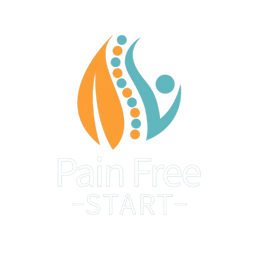Introduction
Living with chronic joint pain can be challenging, and for some, it may be caused by more than one type of arthritis. One such combination is the coexistence of Osteoarthritis (OA) and Rheumatoid Arthritis (RA). In this blog, we’ll explore whether it’s possible to have both conditions simultaneously, how common it is, and how blood tests and X-rays can help distinguish between them. If you’re unsure about your diagnosis, read on to learn more.
Can You Have Osteoarthritis and Rheumatoid Arthritis at the Same Time?
While OA and RA are distinct conditions, it is possible to have both concurrently.
- Osteoarthritis (OA) is a wear-and-tear arthritis that results in the gradual breakdown of joint cartilage, commonly affecting weight-bearing joints like the knees, hips, and spine.
- Rheumatoid Arthritis (RA) is an autoimmune disease that causes chronic inflammation, primarily affecting the smaller joints, such as the hands and wrists.
Since OA develops due to mechanical wear and RA results from an autoimmune response, having both conditions can lead to a more complex joint pain experience.
How Common Is It to Have Both OA and RA?
The prevalence of having both OA and RA is not well-established, but studies suggest it is relatively uncommon. However, because RA increases inflammation in the joints, it can accelerate cartilage breakdown, potentially leading to secondary OA over time.
The National Institute for Health and Care Excellence (NICE) provides guidelines for the management of both OA and RA, but does not specifically address their simultaneous occurrence.
How Blood Tests and X-rays Differentiate OA from RA
Blood Tests for RA vs. OA
RA Diagnosis:
Doctors may order specific blood tests to confirm RA, including:
- Rheumatoid Factor (RF) and Anti-Cyclic Citrullinated Peptide (Anti-CCP) Antibodies – Often present in RA but not OA.
- C-Reactive Protein (CRP) & Erythrocyte Sedimentation Rate (ESR) – Indicate inflammation levels and can be elevated in RA.
OA Diagnosis:
Unlike RA, OA does not have a specific blood test. However, blood work may be used to rule out other inflammatory arthritis conditions or assess overall health.
X-Rays for OA vs. RA
X-rays provide essential insights into joint damage and help distinguish OA from RA:
- OA on X-ray: Joint space narrowing, osteophytes (bone spurs), and bone density changes.
- RA on X-ray: Erosions, joint deformities, and symmetrical involvement of multiple joints.
How to Identify Whether You Have OA or RA
If you’re experiencing joint pain, stiffness, or swelling, a rheumatologist can provide a definitive diagnosis. Here are some key differences to help you understand your symptoms:
OA Symptoms:
✔️ Pain localised to the affected joint.
✔️ Morning stiffness lasting under 30 minutes.
✔️ Worsens with activity but improves with rest.
RA Symptoms:
✔️ Symmetrical joint pain (both knees, hands, etc.).
✔️ Morning stiffness lasting over 30 minutes.
✔️ Can cause fatigue, weight loss, and fever. Rheumatoid arthritis – 7 symptoms you might not expect.
Want to learn more?
Read my blog on;
Exercising with Rheumatoid Arthritis (RA)
What is the difference between Osteoarthritis (OA) and Rheumatoid Arthritis (RA)?
Osteoarthritis (OA): Causes, Symptoms, and Treatment
Managing Arthritis with the Right Approach
If you’re unsure about your diagnosis, seeking early medical advice is crucial—especially if RA is suspected, as early treatment can prevent joint damage.
For those managing OA, RA, or a combination of both, my Pain Free Body Program provides expert guidance, targeted exercises, and essential advice to help you move with less pain and better function.
Check out my program and take the first step toward better health today!
Conclusion
While having both osteoarthritis and rheumatoid arthritis is relatively uncommon, it is possible. Blood tests and X-rays are essential tools to differentiate between the two, and early diagnosis is key—especially for inflammatory arthritis.
Don’t let joint pain limit your life. There’s so much you can do to improve your mobility and ease discomfort. Take action today and regain control over your health!
Take care, Helen
Helen Manders BSc (Hons) MCSP HCPC
Chartered Physiotherapist Since 2001
P.S. Don’t forget I’m here to help if you need. Click here to find out how I can support you.




